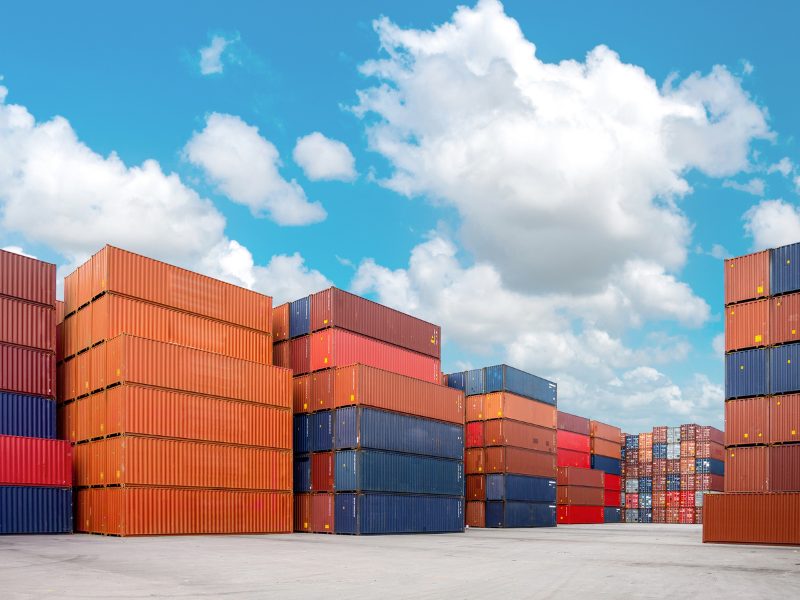The detention of goods at the border can lead to unforeseen costs and jeopardize operations. Key points to identify the source of the issue and expedite release.
In international trade, one of the most frustrating challenges for companies and logistics operators is a delay in import clearance. In such cases, goods are held at the destination country’s customs, unable to move forward to final delivery. Beyond the loss of time, these incidents can generate additional costs, penalties, and, in some cases, affect the relationship with the end customer.
Although the reasons may vary, the common factor is the existence of an obstacle that prevents the completion of the import process. Identifying the root cause and responding promptly is key to releasing the shipment and preventing further consequences. For a step-by-step overview of requirements and best practices, see our Customs Clearance Guide for International Shipments.
Why an Import Clearance Delay Occurs
While each country has its own procedures, the most common causes of import clearance delays tend to be recurring. One of the primary ones is an inaccurate commercial invoice. This document is central for customs, and any error—whether an ambiguous description or an incorrect value—can justify a hold. Missing importer details, tax identification number, or the transaction currency are examples that, although seemingly minor, can obstruct a shipment.
Another frequent cause is incomplete or inconsistent documentation. The invoice, packing list, certificate of origin, and other documents must match each other and correspond to the goods. When discrepancies arise in quantities, measurements, or tariff codes, customs authorities suspend the process until the matter is clarified.
Undervaluation is also a risk factor. Declaring a price below the actual value to reduce duties can lead to penalties and prolonged holds. Customs officers are trained to identify such discrepancies and require adjustments before allowing entry.
For goods subject to special regulations—such as medical equipment, chemical products, or technological material—the absence of specific licenses or permits prevents the cargo from moving forward. Without these documents, there is no room for negotiation: the shipment will remain on hold until the requirement is fulfilled.
Finally, issues with the consignee—such as lacking authorization to import or failing to respond to customs requests—can halt the operation for days or even weeks.
How to Prevent an Import Clearance Delay
While it is not possible to completely eliminate the risk of a shipment being held, proper planning reduces the likelihood of such incidents. Pre-compliance is a central practice, involving verification that goods meet all destination regulations and that the required documentation and licenses are in place before they leave the country of origin.
Another preventive measure is a thorough review of documents. This entails verifying that all shipment records are complete, accurate, and consistent with one another, including invoices, packing lists, certificates, and labels. Investing time in this prior control is more efficient than addressing an issue once the goods are at customs.
Coordination with the Importer of Record (IOR) from the outset also makes a difference. By involving the IOR before dispatching the cargo, specific requirements can be anticipated, and unexpected issues at the destination can be avoided.
Finally, origin-based controls—such as pre-shipment physical inspections—allow confirmation that the goods shipped match the declared information in both quantity and characteristics. This helps prevent observations that could lead to an import clearance delay.

Aerodoc’s Approach
At Aerodoc, we apply a highly structured protocol to resolve shipments held at customs.
- Immediate problem diagnosis. As soon as the customer or freight forwarder reports a hold, Aerodoc’s team identifies the specific cause of the delay. This involves reviewing the customs file, contacting the local authority, and engaging with the courier or forwarder involved. The objective is to obtain, within hours, a clear understanding of which document or procedure is blocking release.
- Direct engagement with customs and authorities. Aerodoc’s local agents manage direct engagement with customs and local authorities. They provide requested information, data corrections, licenses, and certificates as needed. With coverage in more than 172 countries, they communicate with customs in the required language and regulatory format, helping accelerate reviews and clearance.
- Correction of documentation and pending payments. If the delay is caused by errors in invoices, packing lists, or tariff codes, the compliance team makes the necessary adjustments and resubmits the documents immediately. If customs require additional duties or taxes, Aerodoc manages the payment on behalf of the client to facilitate the release of the goods.
- Logistics coordination to resume delivery. Once customs authorizes the release, Aerodoc arranges for transportation to continue to the final destination. This may involve coordinating with the courier, securing space in ground transportation, or even rescheduling white glove deliveries in cases involving technological equipment or sensitive goods.

Aerodoc’s Physical Inspection Process
The physical inspection is a procedure carried out in the country of origin to detect inconsistencies before the cargo is shipped to its destination, helping prevent holds and additional costs. It includes:
- Visual inspection of the goods at origin. Aerodoc staff or designated agents open, verify, and compare the contents of each package against the invoice and packing list.
- Verification of quantities, dimensions, and weight. It is confirmed that the declared information matches the physical goods and that there are no excesses or shortages that could trigger customs observations.
- Labeling and serial number check. For technological equipment or other regulated goods, serial numbers, product codes, and labels are validated to comply with local regulations.
- Packaging and security review. It is verified that the packaging meets international transport requirements and adequately protects the cargo, particularly for white glove or fragile goods.
- Photographic record and report. The entire process is documented with photographs and a detailed report, which is shared with the client before dispatch.
Contact our team of experts to discover how our services can support your operations.
Q&A
- How long can an import clearance delay last at international customs? An import clearance delay may range from 24 hours to several weeks, depending on the country, type of goods, and the complexity of the issue. Regulatory inspections and missing documentation are common causes of extended holds.
- What financial impact does an import clearance delay have on the supply chain? Import clearance delays can lead to increased warehousing services costs, customs penalties, and revenue loss. They also disrupt logistics efficiency and negatively affect customer satisfaction.
- What additional documentation may be requested during an import clearance delay? Customs authorities may request certificates of origin, import licenses, supplementary declarations, or proof of commercial value. Failure to provide these documents prolongs the clearance process.
- How does an import clearance delay affect time-sensitive or cold chain products? Time-sensitive goods, such as perishable or pharmaceutical items, are highly vulnerable during import clearance delays, risking quality degradation. Real-time tracking and contingency protocols are essential to mitigate losses.




